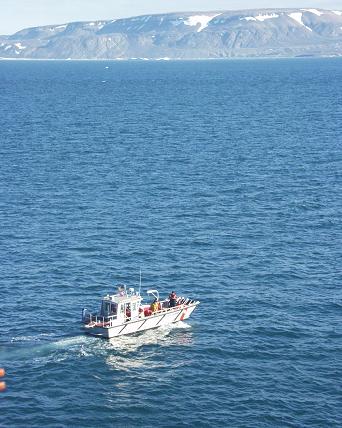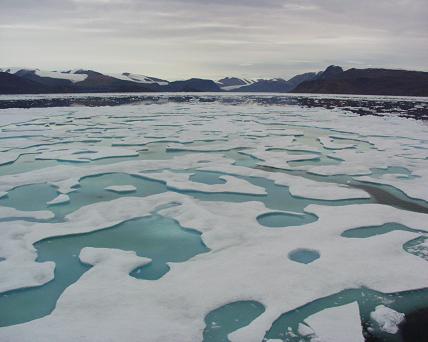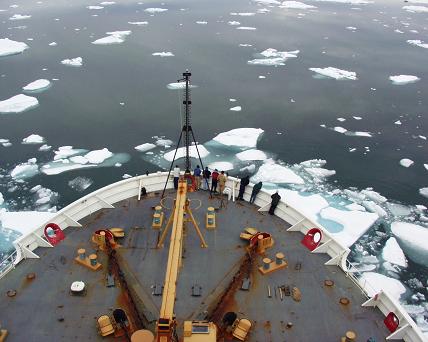A three ring circus
Gerhard Behrens |
| Itís Sunday, but as I wrote last week, it is a regular workday for the scientists and much of the Healy Crew. The past 24 hours has been a four-ring circus of activity. |

Loading the small boat with drysuits, tanks, extra clothes, underwater camera, and tools for collecting the clams. |

Lowering the small boat, Healy 3, into the water. |
The Rosette Crew took more water samples through the night hours. But remember, there is no darkness, so it was light as they worked from before midnight to about 10 am.
The helicopters took off on another flight to check ice conditions further north.
Our ship started breaking through sheets of sea ice this morning. It is hard to describe the feeling of being at the bow of the ship, and watch it plow through big hunks of ice. Even more amazing is the crunching and grinding sound that goes through the ship as we pass over the ice.
Yesterday, a team of science and Coast Guard people began small boat trips to collect clams and to place shallow water pressure moorings. More of those trips were planned for today, but they were cancelled due to the ice. |
| I hope you remember that the clam study is like doing a study of tree rings. In the labs of Oregon State University, the shells will be studied very carefully for the clues they hold. |

Healy 3 heads for the shoreline of Greenland. |

Ice ahead in Alexandra Fiord. |
I also hope you remember that all water has a signature or fingerprint. The water that a clam uses to build a shell leaves its fingerprint in the clamís shell. By studying the clamshells, scientists can figure out the patterns of water run-off from rivers or glaciers. That information can give clues to the weather patterns of the past 10, 20 or even 30 years. |
| The clamshells will also be tested for the metals barium and cadmium. The amount of barium can tell the scientists if the fresh water is coming from the Mackenzie River area of Northern Canada. The amount of cadmium is a clue to the amount of phosphorous, which is a clue to the amount of plants and animals in the area, which is a clue to the amount of ocean mixing that has happened. Thatís a lot of scientific detective work! |

The ice is beautiful, but tough on the hull of a ship! Too tough for the small boat to go out today. |

Breaking the ice draws a crowd in the bow. |
Itís also hard work just getting those clams. It takes a crew of about 10 to get the boat into the water. It takes a crew of three to run the small boat. It takes a team of 6 divers, all taking turns, to dive into the 37-degree water and find the clams, which bury themselves in mud. It takes a few scientists to help find the right place to dive and help the divers record where the clams were taken. |
| Just like the water samples we take, the end result is the scientists believe this information will help them know more about how water is flowing in the Arctic and through Baffin Bay. |

The bow cracks the ice as we steam through. |

We leave a path of broken ice behind us. |
